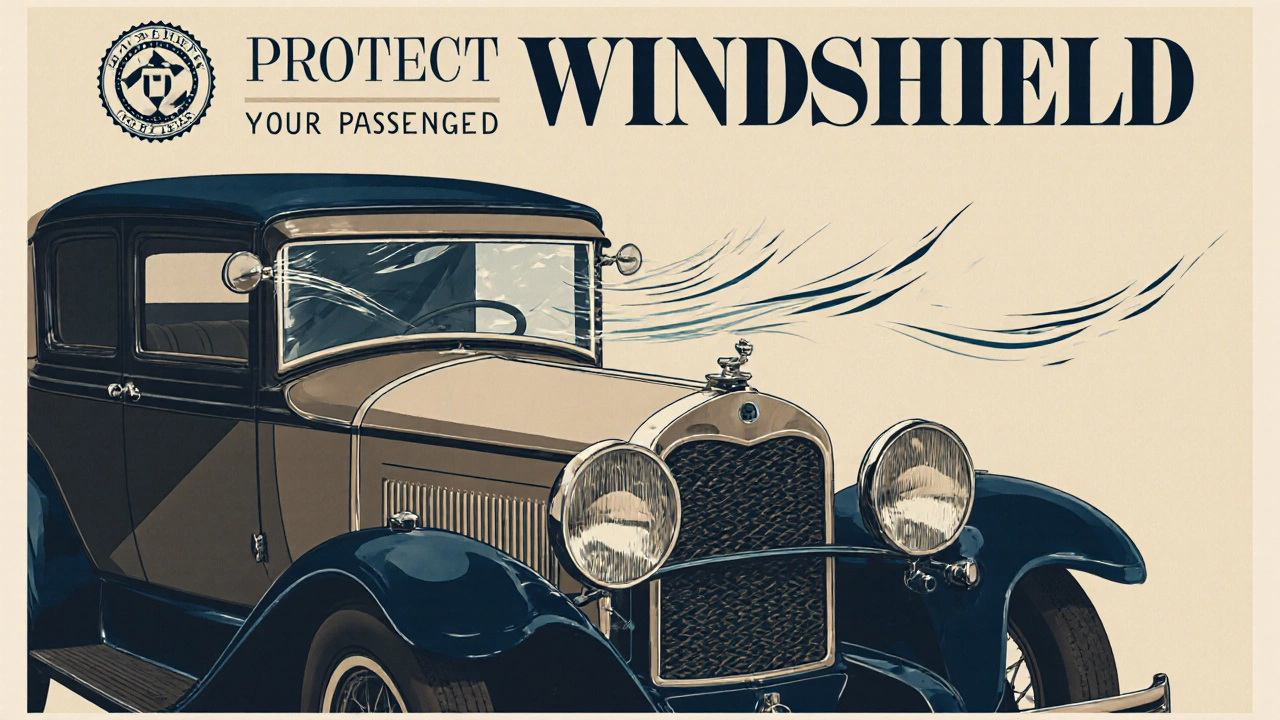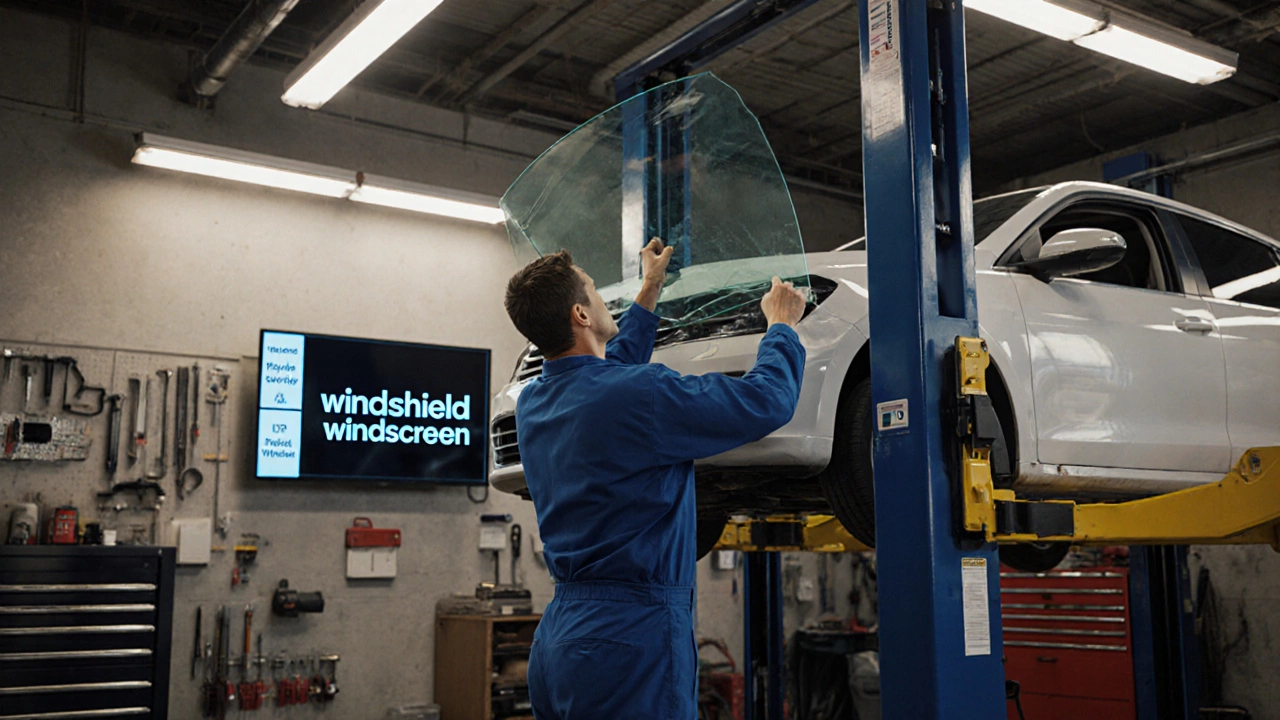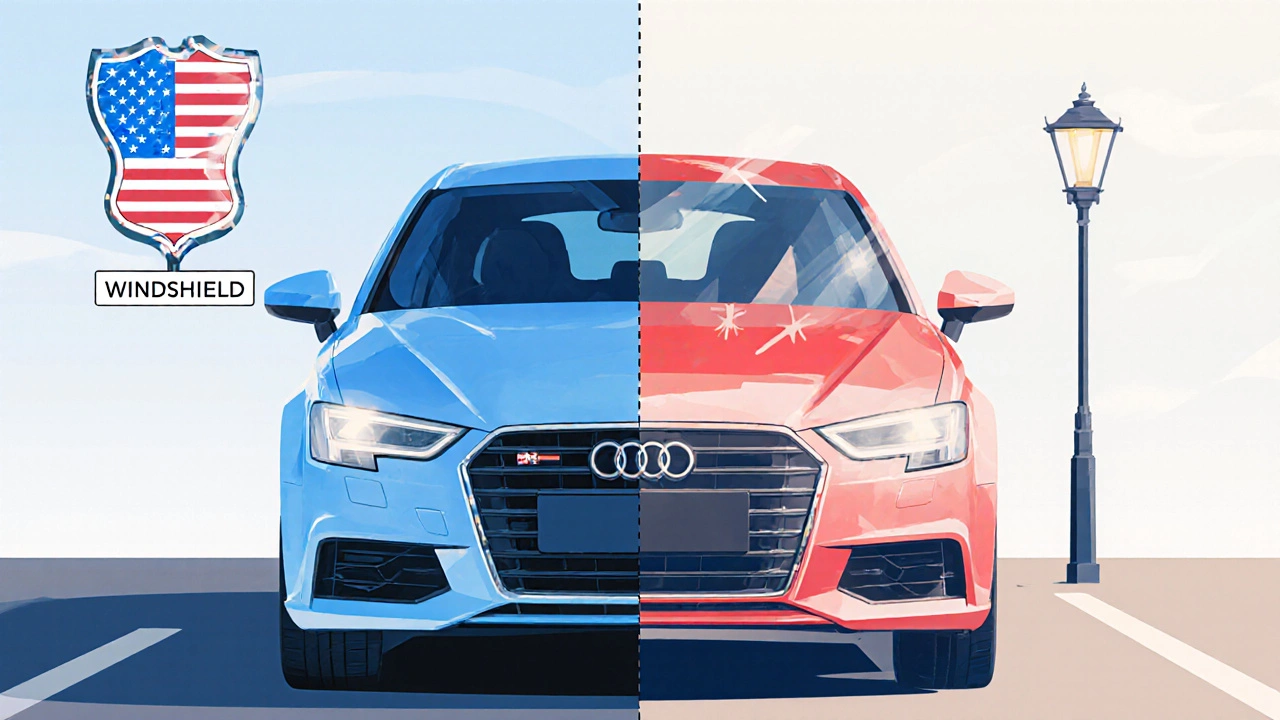Windshield/Windscreen Usage Checker
Check if your text uses the correct term for US or UK English when referring to a car's front glass. Based on data showing "windshield" appears 9,200 times per million words in US media versus "windscreen" at just 12 occurrences.
Analysis Results
The term 'windshield' is used 0 times
The term 'windscreen' is used 0 times
Ever wondered whether Americans call the front glass on a car a windshield or a windscreen? The answer isn’t just a trivia fact-it tells you a lot about language, safety standards, and even how car parts are marketed across the pond.
What the two words actually mean
Windshield is the transparent front panel of a vehicle that protects occupants from wind, debris, and weather; the term is standard in American English. In contrast, Windscreen is the same component, but the name used primarily in British English and other Commonwealth countries. Both pieces serve identical functions-supporting wipers, holding glass, and meeting crash‑test standards-but the label you hear changes with geography.
How often do Americans really say "windshield"?
Data from the Corpus of Contemporary American English (COCA) shows that "windshield" appears roughly 9,200 times per million words, while "windscreen" barely reaches a double‑digit count. The disparity isn’t accidental; it reflects education, media, and the automotive industry’s own branding choices.
| Term | Occurrences per million words | Typical context |
|---|---|---|
| Windshield | 9,200 | New‑car reviews, safety regulations, repair guides |
| Windscreen | 12 | British‑import news, occasional novelty piece |
Why the US stuck with "windshield"
The term dates back to the early 20th century when automobiles first replaced horse‑drawn carriages. American manufacturers marketed the glass as a "shield" against the wind that once blew through open‑top rigs. The phrase caught on in advertising, insurance paperwork, and later in federal safety codes.
In 1966 the U.S. Department of Transportation (DOT) issued Federal Motor Vehicle Safety Standard 223, which repeatedly used "windshield" when defining impact resistance and glazing requirements. That official language locked the word into legal, engineering, and consumer‑facing documents.

British English and the "windscreen" legacy
Across the Atlantic, car makers such as Rolls‑Royce and Vauxhall used "windscreen" in their early brochures. The term aligns with the British habit of naming anything that blocks the wind-think "windsock" or "windbreak". The UK’s Vehicle Certification Agency (VCA) still references "windscreen" in its conformity assessments.
When British cars are sold in the U.S., the product literature is usually re‑branded to say "windshield" for consistency with local regulations.
Impact on car parts and service language
- Parts catalogs: U.S. stores list "windshield wiper blades"; UK stores list "windscreen wiper blades".
- Insurance claims: The claim form on an American insurer asks for "windshield damage".
- DIY guides: Websites like AutoZone and Advance Auto Parts use "windshield repair kit".
Because the terminology is embedded in inventory systems, a mismatch can cause confusion for owners trying to order a replacement online. A UK driver searching for a "windscreen replacement" on an American site may be redirected to a "windshield replacement" page-no big deal, but it’s a reminder that language shapes the buying journey.
Common misconceptions and funny moments
Travel blogs sometimes quote a tweet where an American tourist in London asks, "Where can I get my windscreen fixed?" The local mechanic smiles and says, "You mean your windshield?" The mix‑up is harmless, yet it highlights how even native speakers can stumble when crossing the language border.
Another classic mix‑up occurs in movie subtitles. In the 1994 film Speed, a character shouts, "Get that windscreen down!" The subtitle was later corrected to "windshield" for the U.S. release.

Quick checklist for writers and marketers
- Identify your audience’s primary dialect (American vs British).
- Use "windshield" for any U.S.‑focused content, especially when referencing regulations, insurance, or OEM parts.
- Switch to "windscreen" when writing for a UK or Commonwealth audience, or when quoting British sources.
- Keep SEO in mind: target "windshield" in titles and meta tags if the page aims at U.S. traffic.
- Include both terms in body copy if you want the article to rank for both variations.
When to ask a professional
If you’re unsure whether a repair shop uses the right term, just ask them to show the glass. A genuine professional will recognize the part regardless of what it’s called. For insurance claims, double‑check the policy wording-most U.S. policies explicitly name "windshield".
Final thought
In everyday conversation, Americans overwhelmingly say "windshield" and rarely, if ever, say "windscreen". The British opposite holds true across the pond. Knowing the difference helps you write clearer copy, avoid costly mismatches when ordering parts, and simply sound more native when you’re chatting about cars.
Do American car manuals ever use "windscreen"?
No. Official U.S. service manuals, from manufacturers like Ford and GM, always refer to the component as a "windshield". The term aligns with DOT safety standards and parts cataloguing.
Is there any legal difference between a windshield and a windscreen?
Legally they are the same part; the distinction is purely linguistic. In the U.S., statutes and regulations use "windshield", while UK legislation uses "windscreen".
Can I use a windscreen wiper blade on an American car?
Technically yes, because the blade fits the same mounting system, but retailers label them "windshield wiper blades" for U.S. buyers. Mixing the terms won’t damage the car.
Why does the term "windscreen" still appear in some American media?
Mostly in British‑origin publications or in humor pieces that play on the language difference. It’s not standard usage in the U.S.
Which term should I use for SEO if I target both U.S. and UK audiences?
Include both "windshield" and "windscreen" in the body copy and meta description, but reserve the primary headline and title tag for the term that matches your main audience.

